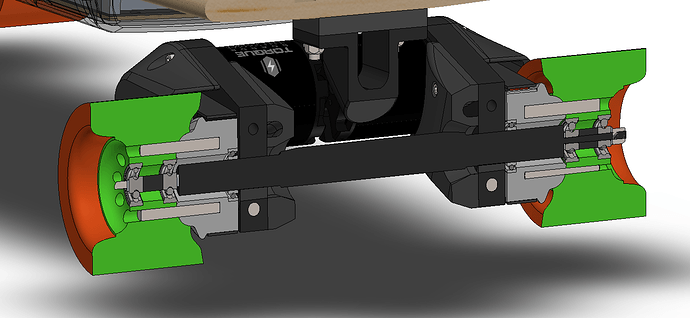Keep in mind a rounded edge like on the 107’s is much better for electric cruising because it sheds rocks to the sides instead of being impacted or changing directions when a rock hits the edge of a sharp lip wheel like the kegal…I personally really like the 90mm flywheels in classic thane for longer efficient rides with a lot of hills and I love my new 107’s in 74 reflex thane, I hope they won’t chunk as easily and the sides are nice and rounded…I put on over 60 miles and they still have skin, that’s nuts…bigger is always better on eskates, for terrain and safety alone, I mosh over railroad crossings with my 107’s without a care now, the longer my rides the smaller the wheels seem to get in my head and harder, the 107’s after 40 miles seem small, trust me, you want the biggest wheel you can afford or fit on your board…90mm flywheels is where I would start, making the square lipped kegal at 85mm only useful for speed runs or unique applications, like sliding…commuting and comfort, go for the abex11 reflex thane in the largest size you can find…for those DIY guys looking for something new or innovative, we need some Siesmic Speedvent wheel pullies please, get them made and modeled, the Speedvent in Defcon thane is what the long distance ultra skaters use and they are even faster and more efficient than abec11 in those large sizes…also, we can use lathes to round the edges of all wheels used in electric skateboarding, so someone take a set of kegals to the lathe yo…downhill guys have wheel lathes and mod wheels all the time for the rain or whatnot…
Width is often overlooked. With the F1 SuperFly I can sail right over railroad tracks for example, not because of the 107mm diameter, but because of the super-wide contact patch. Going over them at 45 degrees, my wheels never fall into the grooves.
I personally prefer a narrower contact patch on my eskates and a wider on my regular skateboards, the narrower patch reduces rolling resistance and extends the range of your battery at the expense of traction or cornering…depends on what you are doing or building for…
I’m new to 3D printed parts. I need to buy a finished part. I followed the link https://www.thingiverse.com/thing:1707030 But how do I buy the part?
Thanks @chaka
This looks really nice: $38
swappable pulley: $30.15 available in 32T or 36T, 9mm or 15mm belt width.
Shipping to California: $28.84
So, around $100 more or less total. I really want 44T though. I will be patient and wait. 
These files are so you can print them yourself
What is the diameter os the pins that go into the core? Since the hole is not constant diameter I’m having a hard time in what dimension to use to have a solid fit but not crack the core
I’m using 3d printed pulley to use these wheels. 85mm bubblegum. Like them over others in similar size.
The holes are .25" in diameter but you need to make your pins a little smaller.
.23" should still give a bit of a friction fit.
Thanks 10char
The holes are 1.25" center to center. Hope that helps 
Thanks, I always used my 3D printed pulleys with pass through screws and I plate on the other side, in my new board I will press in the pulleys stell pins that goes in the wheel, pretty much what you do on your setup to have a cleaner look
On a printer you may need to sand the pins to get them to fit or scale the pin diameter down until it fits. Really depends on how well your printer holds calibration. If your z-axis induces any ringing in your print you will probably need to drop the diameter down to .21 or .22 inch.
Yeah, the holes always came smaller, but i’m pretty used to my printer to include the compensation on the drawing. The pulley bearing will be moved to the center of the belt path and will be a spacer between it and the mount
Yes, that is how we do it. Takes all the “play/flex” out of a bolt on pulley.
